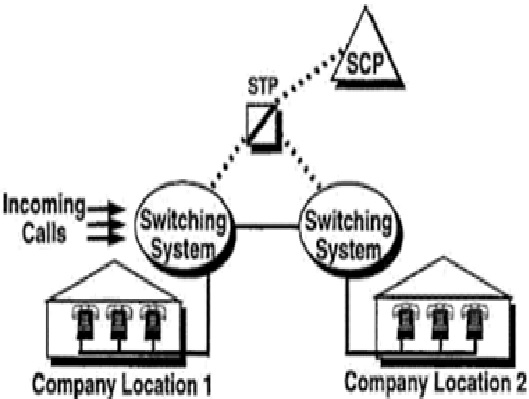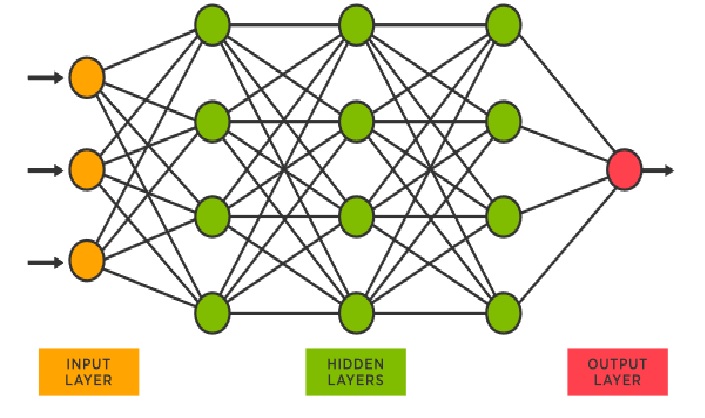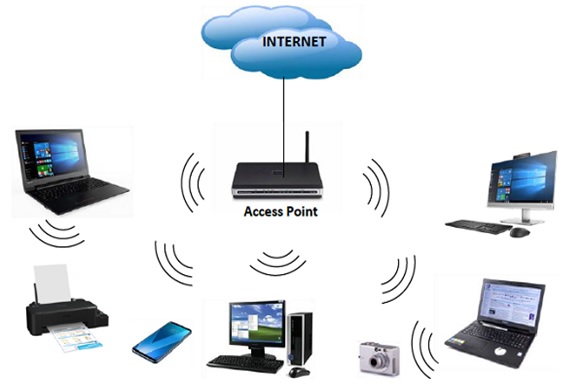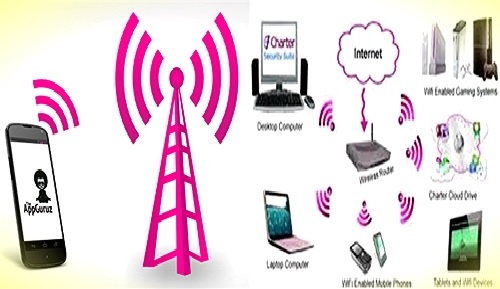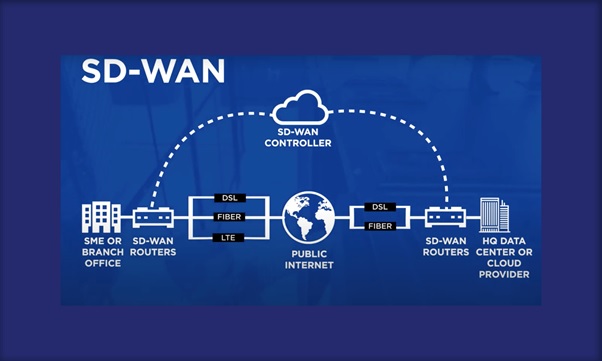Wireless Network: Types of Wireless Network
Types of Wireless Networks
Wireless LANs − Connects two or more network devices using wireless distribution techniques.
Wireless MANs − Connects two or more wireless LANs spreading over a metropolitan area.
Wireless WANs − Connects large areas comprising LANs, MANs and personal networks.
Wireless PAN
Wireless personal area networks (WPANs) connect devices within a relatively small area, that is generally within a person's reach. For example, both Bluetooth radio and invisible infrared light provides a WPAN for interconnecting a headset to a laptop. ZigBee also supports WPAN applications [1]. Wi-Fi PANs are becoming commonplace (2010) as equipment designers start to integrate Wi-Fi into a variety of consumer electronic devices. Intel "My WiFi" and Windows 7 "virtual Wi-Fi" capabilities have made Wi-Fi PANs simpler and easier to set up and configure figure1.
Wireless LAN
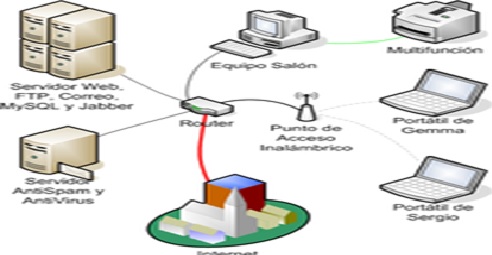
Figure 1. wireless LAN
Wireless LANs are often used for connecting to local resources and to the Internet
A wireless local area network (WLAN) links two or more devices over a short distance using a wireless distribution method, usually providing a connection through an access point for internet access. The use of spread-spectrum or OFDM technologies may allow users to move around within a local coverage [2] area, and still remain connected to the network.
Products using the IEEE 802.11 WLAN standards are marketed under the Wi-Fi brand name. Fixed wireless technology implements point-to-point links between computers or networks at two distant locations, often using dedicated microwave or modulated laser light beams over line of sight paths. It is often used in cities to connect networks in two or more buildings without installing a wired link. To connect to Wi-Fi using a mobile device, one can use a device like a wireless router or the private hotspot capability of another mobile device.
Wireless ad hoc network
A wireless ad hoc network, also known as a wireless mesh network or mobile ad hoc network (MANET), is a wireless network made up of radio nodes organized in a mesh topology. Each node forwards messages on behalf of the other nodes and each node performs routing.[12] Ad hoc networks can "self-heal", automatically [3] re-routing around a node that has lost power. Various network layer protocols are needed to realize ad hoc mobile networks, such as Distance Sequenced Distance Vector routing, Associativity-Based Routing, Ad hoc on-demand Distance Vector routing, and Dynamic source routing.
Wireless MAN
Wireless metropolitan area networks are a type of wireless network that connects several wireless LANs.
WiMAX is a type of Wireless MAN and is described by the IEEE 802.16 standard.
Wireless WAN
Wireless wide area networks are wireless networks that typically cover large areas, such as between neighbouring towns and cities, or city and suburb. These networks can be used to connect branch offices of business or as a public Internet access system. The wireless connections between access points are usually point to point microwave links using parabolic dishes on the 2.4 GHz and 5.8Ghz band, rather than omnidirectional antennas used with smaller networks. A typical system contains base station gateways, access points and wireless bridging relays [4]. Other configurations are mesh systems where each access point acts as a relay also. When combined with renewable energy systems such as photovoltaic solar panels or wind systems they can be stand alonesystems.
- Terrestrial microwavemicrowave – Terrestrial microwave communication uses Earth-based transmitters and receivers resembling satellite dishes. Terrestrial microwaves are in the low gigahertz range, which limits all communications to line-of-sight. Relay stations are spaced approximately 48 km (30 mi) apart.
- Communications satellites– Satellites communicate via microwave radio waves, which are not deflected by the Earth's atmosphere. The satellites are stationed in space, typically in geosynchronous orbit 35,400 km (22,000 mi) above the equator. These Earth-orbiting systems are capable of receiving and relaying voice, data, and TV signals.
- Cellular and PCS systems use several radio communications technologies. The systems divide the region covered into multiple geographic areas. Each area has a low-power transmitter or radio relay antenna device to relay calls from one area to the next area.
- Radio and spread spectrum technologies – Wireless local area networks use a high-frequency radio technology similar to digital cellular and a low-frequency radio technology. Wireless LANs use spread spectrum technology to enable communication between multiple devices in a limited area. IEEE 802.11 defines a common flavor of open-standards wireless radio-wave technology known as Wi-Fi.
- Free-space optical communication uses visible or invisible light for communications. In most cases, line-of-sight propagation is used, which limits the physical positioning of communicating devices.
Field regions
- Electric and magnetic fields are created by charged particles in matter such as electrons. A stationary charge creates an electrostatic field in the space around it. A steady current of charges (direct current, DC) creates a static magnetic field around it. The above fields contain energy, but cannot carry power because they are static. However time-varying fields can carry power.[29] Accelerating electric charges, such as are found in an alternating current (AC) of electrons in a wire, create time-varying electric and magnetic fields in the space around them. These fields can exert oscillating forces on the electrons in a receiving "antenna", causing them to move back and forth. These represent alternating current which can be used to power a load.
- The oscillating electric and magnetic fields surrounding moving electric charges in an antenna device can be divided into two regions, depending on distance from the antenna. The boundary between the regions is somewhat vaguely defined.[17] The fields have different characteristics in these regions, and different technologies are used for transferring power.
- Near-field or nonradiative region – This means the area within about 1 wavelength (λ) of the antenna. In this region the oscillating electric and magnetic fields are separate and power can be transferred via electric fields by capacitive coupling (electrostatic induction) between metal electrodes, or via magnetic fields by inductive coupling (electromagnetic induction) between coils of wire.These fields are not radiative, meaning the energy stays within a short distance of the transmitter. If there is no receiving device or absorbing material within their limited range to "couple" to, no power leaves the transmitter. The range of these fields is short, and depends on the size and shape of the "antenna" devices, which are usually coils of wire. The fields, and thus the power transmitted, decrease exponentially with distance, so if the distance between the two "antennas" is much larger than the diameter of the "antennas" very little power will be received. Therefore, these techniques cannot be used for long range power transmission.
- Resonance, such as resonant inductive coupling, can increase the coupling between the antennas greatly, allowing efficient transmission at somewhat greater distances, although the fields still decrease exponentially. Therefore the range of near-field devices is conventionally divided into two categories.
- Short range – up to about one antenna diameter: This is the range over which ordinary nonresonant capacitive or inductive coupling can transfer practical amounts of power.
- Mid-range – up to 10 times the antenna diameter: This is the range over which resonant capacitive or inductive coupling can transfer practical amounts of power.
- Far-field or radiative region – Beyond about 1 wavelength (λ) of the antenna, the electric and magnetic fields are perpendicular to each other and propagate as an electromagnetic wave; examples are radio waves, microwaves, or light waves. This part of the energy is radiative meaning it leaves the antenna whether or not there is a receiver to absorb it. The portion of energy which does not strike the receiving antenna is dissipated and lost to the system. The amount of power emitted as electromagnetic waves by an antenna depends on the ratio of the antenna's size Dant to the wavelength of the waves λ, which is determined by the frequency: λ = c/f. At low frequencies f where the antenna is much smaller than the size of the waves, Dant λ, very little power is radiated. Therefore the near-field devices above, which use lower frequencies, radiate almost none of their energy as electromagnetic radiation. Antennas about the same size as the wavelength Dant ≈ λ such as monopole or dipole antennas, radiate power efficiently, but the electromagnetic waves [5] are radiated in all directions (omnidirectionally), so if the receiving antenna is far away, only a small amount of the radiation will hit it. Therefore, these can be used for short range, inefficient power transmission but not for long range transmission.
- However, unlike fields, electromagnetic radiation can be focused by reflection or refraction into beams. By using a high-gain antenna or optical system which concentrates the radiation into a narrow beam aimed at the receiver, it can be used for long range power transmission. From the Rayleigh criterion, to produce the narrow beams necessary to focus a significant amount of the energy on a distant receiver, an antenna must be much larger than the wavelength of the waves used: Dant >> λ = c/f. Practical beam power devices require wavelengths in the centimeter region or below, corresponding to frequencies above 1 GHz, in the microwave range or above.
References:
- Whats is meant by types of wireless network? Reterived may 2020 from https://www.tutorialspoint.com/Wireless-Networks
- https://www.cisco.com/resource-center/networking/wireless-network.html
- https://www.techopedia.com/definition/26186
- https://commotionwireless.net/docs/cck/networking/types-of-wireless-networks
- https://www.computernetworkingnotes.com/ccna-study-guide/types-of...
Cite this article:
Nandhinidwaraka.S (2021), Wireless Network: Types of Wireless Network, AnaTechMaz, pp. 7




